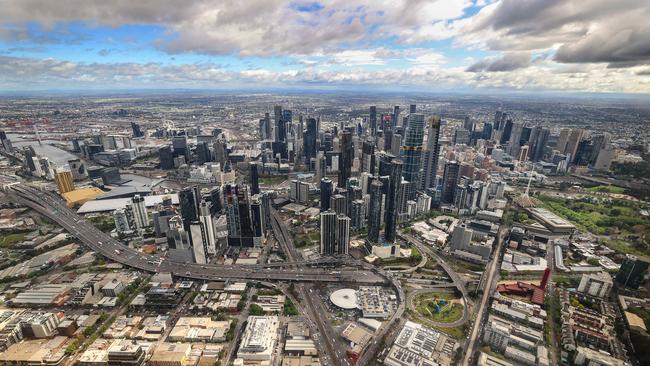Rental crisis – the price hikes have only started
A new report from the PropTrack warns rents will keep rising at ‘a rapid pace’ in the months ahead, particularly in the major cities.
Business
Don't miss out on the headlines from Business. Followed categories will be added to My News.
The rental crisis in the capital cities may be worse than recent vacancy rate figures suggest.
A new report shows the supply of rental stock has dropped sharply, while demand is surging.
Investors in the property market are also responding to the tightness of supply with mounting evidence of rent price hikes – capital city rents to the end of March are up 13 per cent year-on-year.
There had been some signs of an easing of conditions earlier this year when vacancy rates appeared to stabilise. In fact, back in January, a report from SQM Research said the national vacancy rate increased (or loosened) to 1.3 per cent, from 1 per cent, between November and December.
But the latest quarterly report for the three months to March from PropTrack warns that it expects “rental prices are likely to continue increasing at a rapid pace over the coming quarters, particularly in the major cities”.
The property data group, owned by REA, also suggests that “rental price growth remains much stronger than property price growth, which will bring some improvements in yields over the coming year”.
According to Cameron Kusher, director of economic research at PropTrack, “a key issue is migration rebounding rapidly and temporary student visas also lifting – this is going to create more competition for rental stock”.
For renters the report points to a considerable extension of current conditions in the market where one per cent vacancy rates in the cities has led to a severe lack of choice and rising prices. The new report says the national vacancy rate is now 1.5 per cent, down from 1.6 per cent at the end of last year.

For investors, the report suggests that yields which have already improved will move higher in Sydney and Melbourne, they are close to the cash rate at near 3.6 per cent. In the regional centres they are well above the cash rate – in WA yields are running close to 7 per cent.
At the heart of the crisis is lack of supply – spelled out in the report by the combined capital cities total rental listing figure, which fell 18 per cent year-on-year.
As renters and inventors try to come to terms with the nature of the post pandemic market, social welfare groups say the situation is causing renewed hardships.
An Anglicare survey released this week surveyed more than 45,000 rental listings across Australia and found that 345 rentals (0.8 per cent) were affordable for a person earning a full-time minimum wage.
According to Anglicare Australia executive director Kasy Chambers: “If full-time wage earners are doing it tough, then people on Centrelink payments don’t stand a chance. Less than 1 per cent of rentals are affordable for a person on the age or disability support pensions. For a person out of work, it’s 0 per cent – and that includes the highest rate of rent assistance.”
The rent squeeze is at its worst in metropolitan centres. As the report points out: “Capital city rent growth is outpacing growth in regional areas, a reversal of the trend we saw during the pandemic when regional rents were growing faster. There’s also been a shift in growth from houses to units.”
Across the nation, the new data confirms a diverging pattern between cities and in regional areas. Importantly, rental stock is arriving in volume in the regional market, but it remains in decline in the cities.
The report offers little promise the situation will change anytime soon. It suggests that rising rates have made it harder for renters to transition to becoming homeowners while also reducing the number of potential investors in the market – the value of home lending has dropped sharply for home loan borrowers – down 27 per cent and even more dramatically for investors down 33 per cent over the year.
More Coverage
Originally published as Rental crisis – the price hikes have only started





